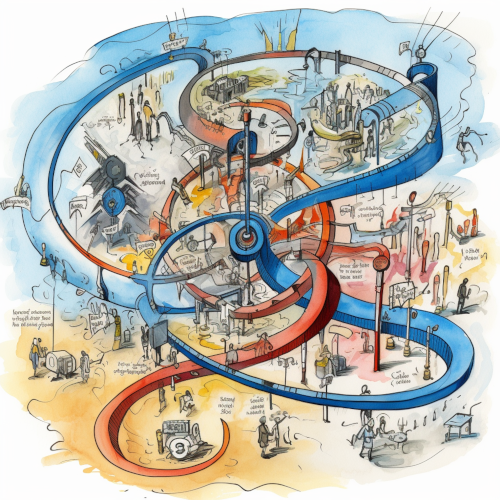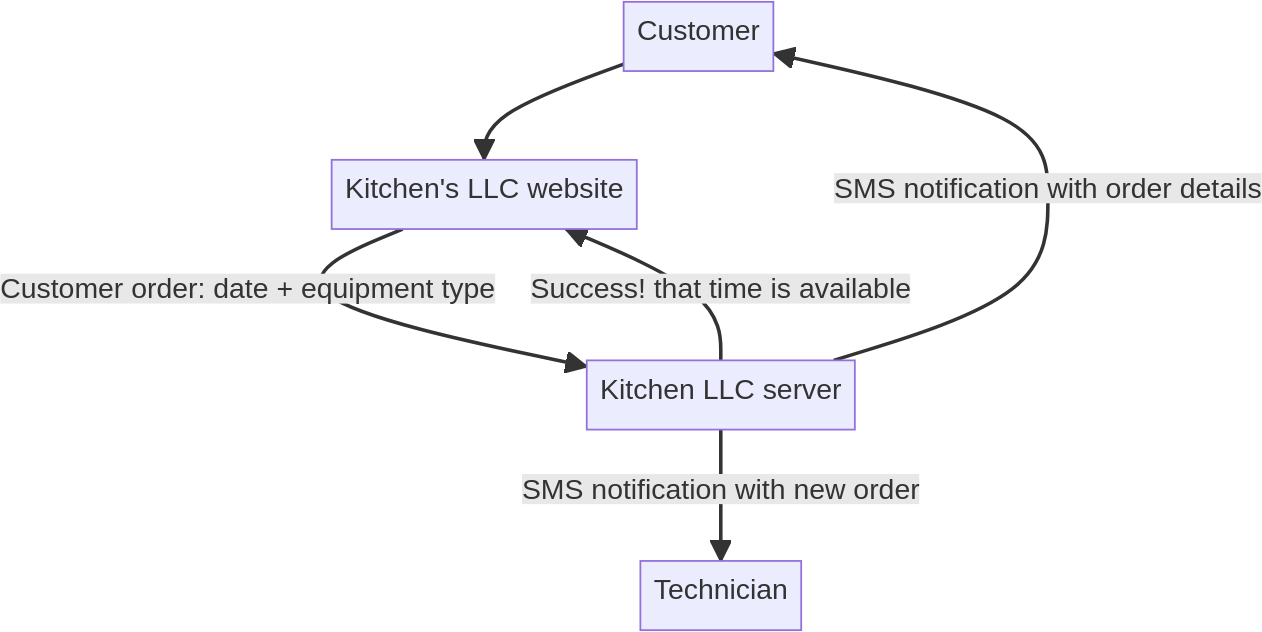How to Implement Software Business Automation Solutions
Implementing business process automation (BPA)
Tools aside, you might wonder about the implementation process- What’s the general sequence? How long do these things take? When will I note increases in efficiency? A scenario paints a clearer picture, so we’ll walk through an example. Note: this hypothetical merges real implementations from a few K-Optional clients.
If you’re thinking of bringing on consultants to help you, perhaps you will find K-Optional’s primer useful: How to vet and hire a competent software development firm.

A strong BPA will help your business increase customer satisfaction, reduce repetitive tasks and increase customer satisfaction, so let’s get started.
Internal Process identification
10% finished
You’re an operator at an appliance servicing business, Kitchens LLC. Your firm takes requests from customers to repair industrial kitchen equipment: walk-in refrigerators, dish washers, and ovens to name a few. As requests come in, you assign trained technicians to visit facilities and make repairs.

You have noted a constraining bottleneck— or rather it has hit you in the face: 90% of customers submit repair requests through your website’s contact form and two people arduously schedule the repair. They need to:
- Read the form submission’s generic description field and catalog the type of repair. That might even involve actually making a phone call to the customer.
- Assign available technicians on mutually available time slots.
- Send confirmation correspondence to the customer.
You’re the boss during the internal process identification phase— no one knows the most grueling systems in your company better than you. Even so, a business process automation firm can help you think about your systems more effectively.
Automation Tool Selection
15% finished
We found a subsystem that’s ripe for automation which means it’s time to reach for the right tools. Do any stand-out to you as well-suited?
Try reducing the current system to discrete functions:
- Customer enters data (data-intake tool)
- Administration schedules (scheduling tool)
- Customer receives follow-up (notification tool)
Such functions align well with our arsenal.
But doesn’t Kitchens LLC already have a web interface for customer data? Indeed. But it sounds like we can do a better job validating the input fields and making the information more useful. Moreover, just because your system uses an effective medium doesn’t make it effective. My other issue with the current contact form is that it connects to a human’s email address; we can do better, integrating the contact form directly with the automated scheduler. Thus we can’t forget to consider the fourth component to this automation, the integration system which joins the other pieces.
Specification
50% finished
Speaking of the integration system, we need our internal process automation team to describe it objectively in a specification. “Specs” aren’t universal in structure, but they should:
- Convey 4-D processes, ideally with diagrams.
- Dictate the “path to implementation”- what will be done and in what order?
- List the affected systems and measures to prevent negative side-effects.
- Inform relevant personnel timeline estimates.
We won’t include a full spec here for the sake of brevity, but feel free to request an example specification using our contact box. We reply very quickly.
A spec for Kitchens LLC’s business process automation might include details like:
Example Specification Snippet

Implementation timeline
I. Design and build an enhanced ordering form using React.js. Form should validate date selector against unavailable times.
- Implementation: 2 weeks
- Quality control on sandboxed staging environment: 2 weeks
- Replace live web-form with enhanced version. Preserve constancy across rest of process at this point
II. Implement notification scheduling integration
…
Diagrams sometimes sacrifice fidelity for simplicity, so specs should ideally express information in multiple ways.
Bespoke Software Development
90% finished
See the “Execution” portion of “How to vet and hire a competent software development firm”.
Automation Deployment
100% finished
Spec signed-off, software written, your development team will set about rolling-out the precious automation!
But deployment can be quite delicate. If you are automating a live system with little appetite for downtime, then your team should take care to prevent any sort of service disruption.
K-Optional Software leverages automated testing, rigorous quality assurance, DevOps best practices, and process-flow diagrams to ensure meet “zero-downtime” constraints. Expect coordination like this only from the most experienced firms.

In this case, a commit to Kitchen LLC’s website code modifies the contact form to both pack better validation, and talk to a new server endpoint in a single deployment; one minute requests fell into an email inbox, and the very next an elegant interface validated and scheduled orders automatically.
Return on investment
Now, every time a customer automatically schedules a fix in the future Kitchens LLC saves time, eliminates repetitive tasks and increases efficiency. Their final responsibility, therefore, lies in deciding how to allocate the saved costs and spend the saved time 🚀.